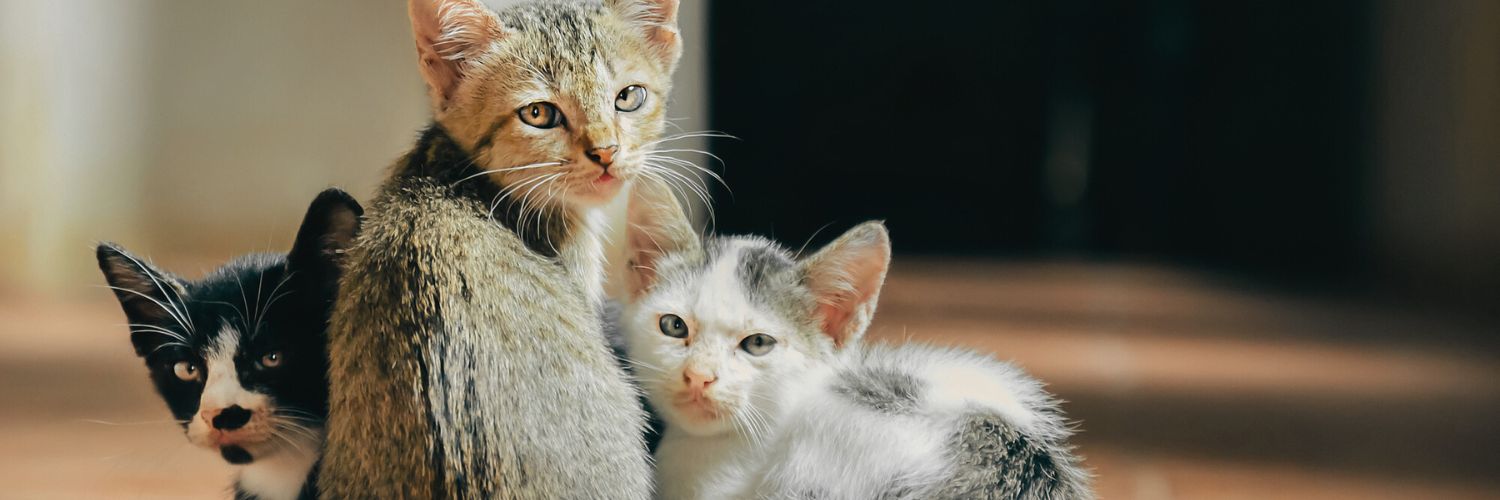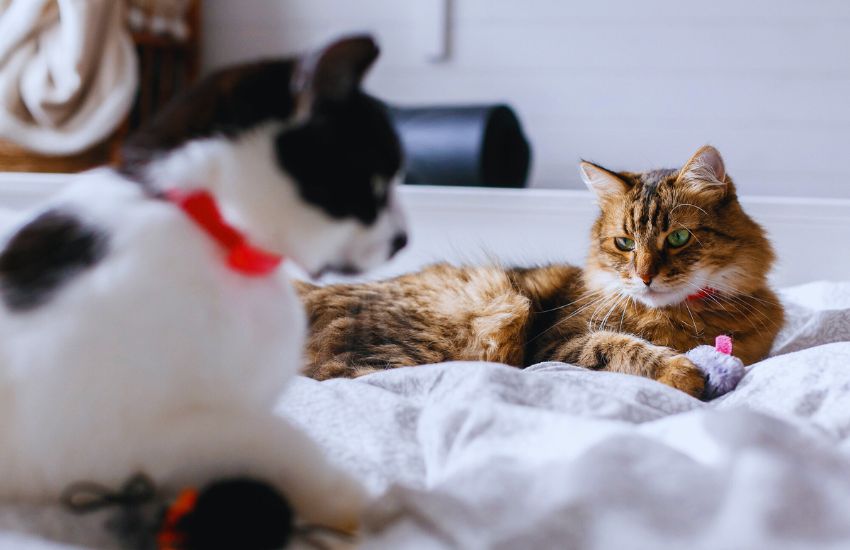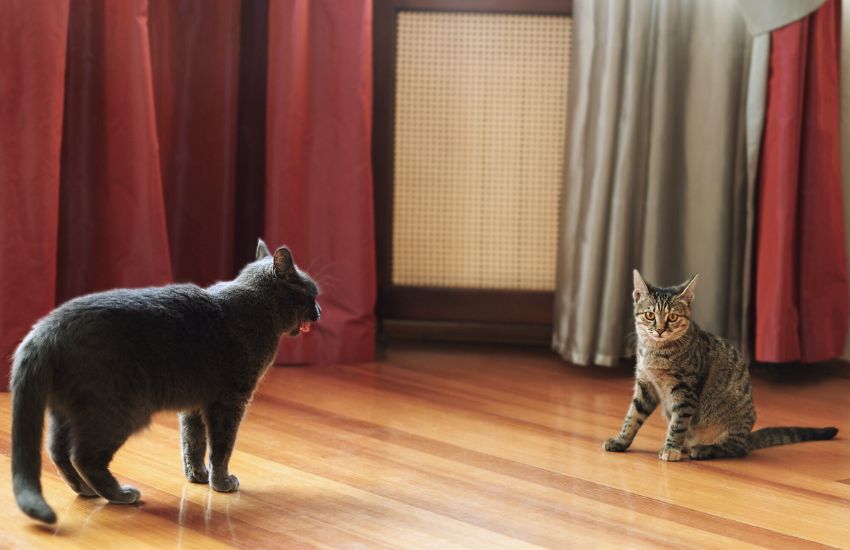shelter pets in need
Each order helps pets in need

Multi-cat households bring twice or thrice the joy—and often, twice or thrice the responsibility. Maintaining harmony amidst your feisty feline family doesn't have to be a ruffling task though; with the right tips and knowledge, you'll become an expert in managing your meowing entourage!
A soothing purr, a playful pounce, a warm cuddle—these are just some of the joys that come with owning multiple cats. These feline friends provide companionship not just for you but for each other as well. Together, they can combat loneliness and stress, providing a serene atmosphere in your abode.
Beyond emotional support, watching your cats interact can be pure entertainment! Their animated playfights and adorable antics keep boredom at bay. However, navigating the world of multi-cat households is not without challenges. Managing varying personalities and preferences requires strategy and patience. But with some adjustments and a little know-how, the rewards are certainly worth it!
If you've ever watched a group of cats interact, you've probably noticed that they have their own social norms and rules. They're incredibly territorial creatures, with a hierarchy often dominated by older or more assertive felines. Understanding this is key to successfully maintaining a multi-cat home.
Cats have a unique way of communicating that extends beyond their meows and purrs. Body language plays a significant role in their interactions, so learning to interpret those subtle cues can help you understand what's going on in your cats' world.
Like humans, each cat has its personality—shy or bold, playful or calm. Recognizing these distinctive traits can significantly help in tailoring an environment that suits all your furry friends and keeps the peace at bay.

Statistics show that over 50% of multi-cat households experience some degree of cat-to-cat tension or conflict. What's a peace-loving cat parent to do? Here are some common sense tips, courtesy of veterinary behavior specialist Debra F. Horwitz, DVM, from Psychology Today.
According to Dr. Horwitz, feral cats typically group in a location with a reliable food source. In these groups, cats tend to pick and choose the companions they want to hang out with and those they would rather avoid. This means not all of your cats will get along equally well.
Space is a crucial factor when you're living with several cats. It's not just about the square footage but how that space is utilized. Every cat needs its territory to feel safe and comfortable. Don't neglect vertical spaces—adding cat trees or shelves can make a big difference.
One golden rule: maintain separate litter boxes for each cat to avoid territorial disputes. Similarly, plan separate feeding stations and water bowls to establish harmony during mealtimes. Proper planning of these critical areas can keep your cats from being tense, especially if one of them is a newcomer.
Create a "safe zone" for submissive cats using things like closed doors and baby gates. Make sure your cats have more than one good place to perch and look out the window. Spend equal time playing and interacting with all the cats in the home.
You can also experiment with calming pheromones like Feliway diffusers to calm tense multi-cat households. Some cat owners swear by using calming flower essences like Rescue Remedy. There are also "nutraceuticals" you can try, including dietary supplements and even cat foods with calming properties.
Cats are as diverse as humans when it comes to personality, and compatibility can play a crucial role in maintaining harmony. Not all cats get along with each other, so consider each cat's traits when adopting another one.
When introducing a new cat, allow for a slow and gradual introduction. Keep them separated initially and gradually increase the time they spend together.
Watch their interactions closely, note any signs of aggression, and adjust accordingly. This careful approach helps avoid unnecessary conflicts and eases the transition for all parties involved.

Cats require mental and physical stimulation, and it's no different in a multi-cat residence. Regular playtime is essential. Use interactive toys to encourage sharing and cooperation and increase bonding among your pets.
Additionally, rotating toys and introducing new activities can keep things exciting for your cats. It stimulates their curiosity, keeps boredom at bay, and helps maintain physical fitness.
For households allowing outside access, supervised outdoor ventures like leash walks can present new environments for exploration. However, always ensure their safety during these outdoor activities. Better yet, create an outdoor enclosure for them for maximum safety! A stimulated cat is a happy cat—so keep them on their paws with fun and safe engagements!
With more cats comes increased responsibility, especially when it comes to health and hygiene. Regular vet checks are critical. Each cat needs proper vaccinations, and potential health issues must be identified and addressed quickly.
Flea and parasite control is a must in multi-cat homes. One infected cat could spread parasites to others, increasing the chances of a full-blown infestation.
Nutrition is another crucial area of focus. All cats are carnivores, but their dietary needs can vary based on age, weight, and overall health status. A balanced diet tailored to each cat's needs is fundamental for their well-being.
Just like humans, cats thrive in an environment where there's routine and consistency. These pets love predictability; establishing a pattern can help your household run smoothly.
Cats are creatures of habit. Having fixed schedules for feeding times ensures that each cat knows when it's mealtime. This rhythm helps maintain dietary discipline and avoids competition at the feeding station.
Playtime should be predictable, too. Having dedicated slots for interaction and play helps distinguish between 'my time' and 'our time,' reducing territorial disputes and creating bonding moments.
Ending the day with a gentle petting session or sharing a quiet space can further build trust. When firm routines are set, your kitty friends will be more relaxed knowing what to expect at different times of the day.

Living with more than one cat is a dynamic process. It requires consistent monitoring and making adjustments based on your feline companions' behaviors and needs. Ensuring everyone's well-being sometimes calls for a lot of flexibility.
While enjoying the company of cats, watch for any signs of stress or discomfort among your furry friends. This could include changes in eating habits, aggression, excessive grooming, or withdrawn behavior.
Remember that your approach to managing your multi-cat household may need to change over time. As your cats age or as circumstances shift, their needs can change, and you must adapt accordingly.
If the dynamics between your pets become too complicated or their behavior becomes worrisome, don't hesitate to seek professional help. A certified cat behaviorist can offer valuable insights into maintaining harmony in your multi-cat home.
Caring for cats can undoubtedly be challenging, but the joy of watching your cats grow together and share their lives is unmatched. Having lived through the ups and downs of multi-cat living, you'll have a treasure trove of memories and experiences that can be both rewarding and fulfilling!
Make your cat feel appreciated by wearing some fun cat merch! Browse our cat collection—25% of all proceeds go directly to no-kill animal shelters!
A multi-cat household can potentially cause problems such as territorial disputes, inter-cat aggression, and competition for resources like food, litter boxes, and attention.
Introducing a new cat or kitten involves initially keeping the newcomer and existing pets separate, gradually introducing them via scent swapping and short supervised meetups, and finally allowing them to interact freely under supervision once they've shown signs of acceptance.
While cats can be found in several locations due to their curious nature, it's generally not ideal for a domestic cat to have more than one home as they thrive on routine, security, and familiarity. Having multiple homes can cause stress due to inconsistent schedules and changing environments.
Leave a comment